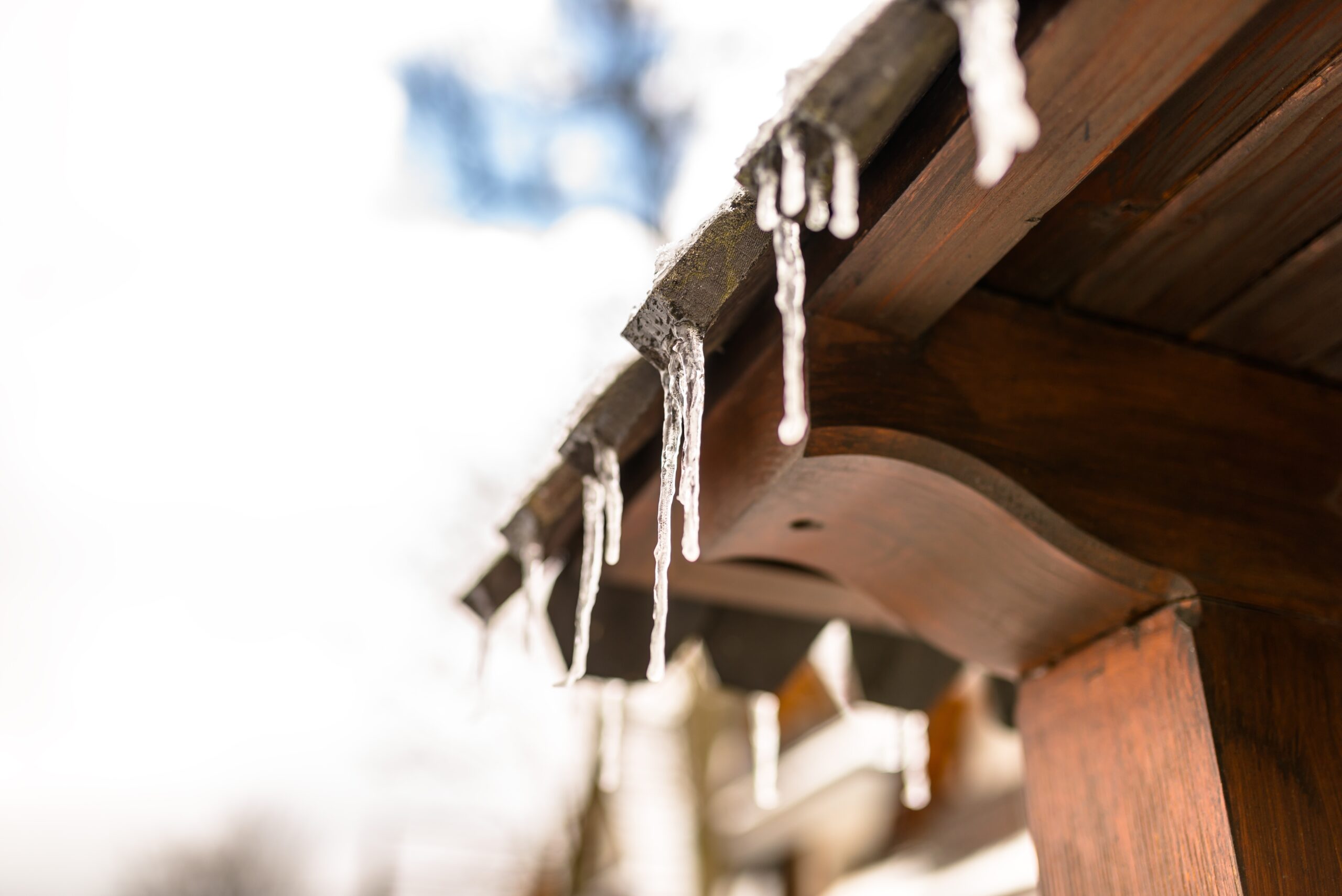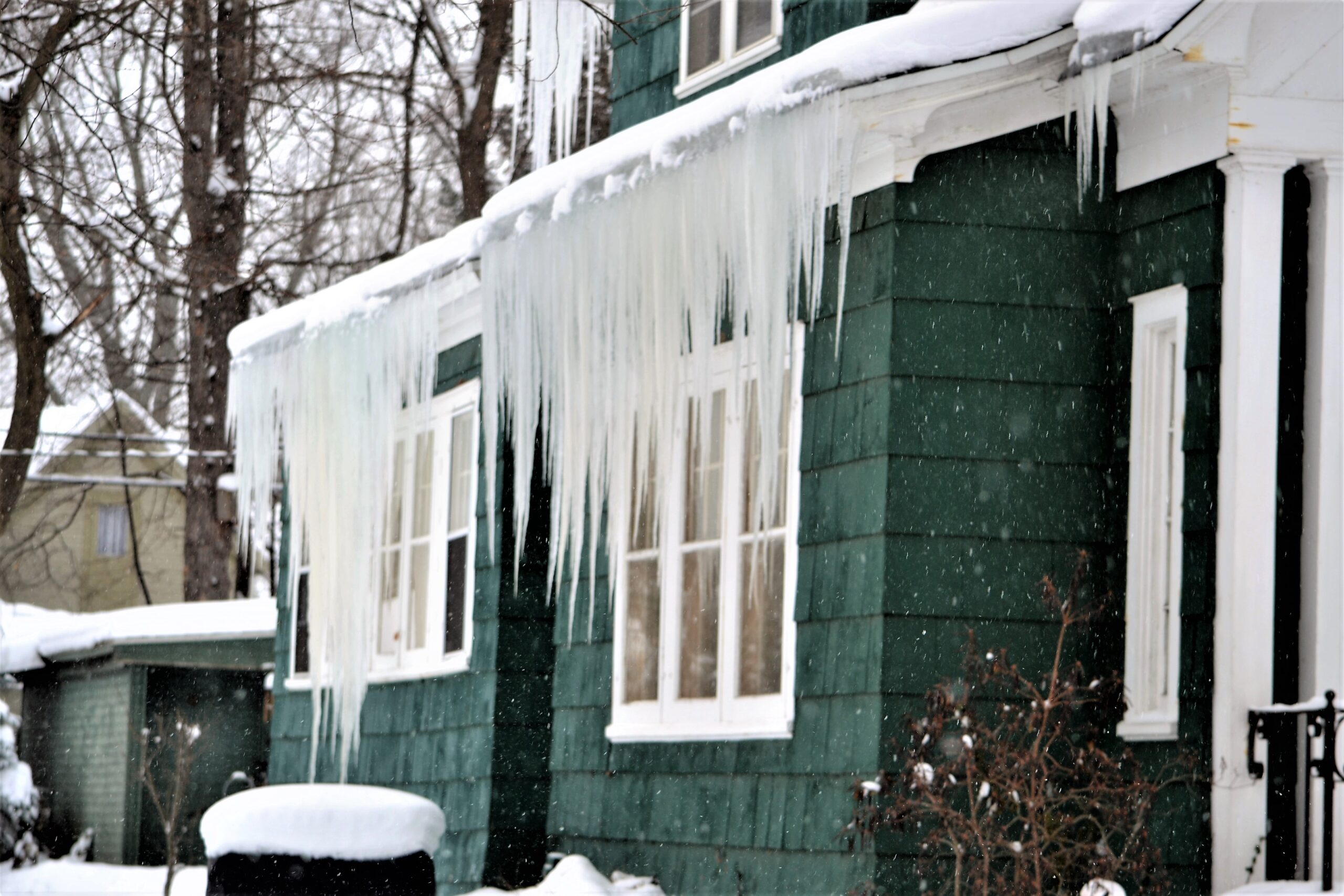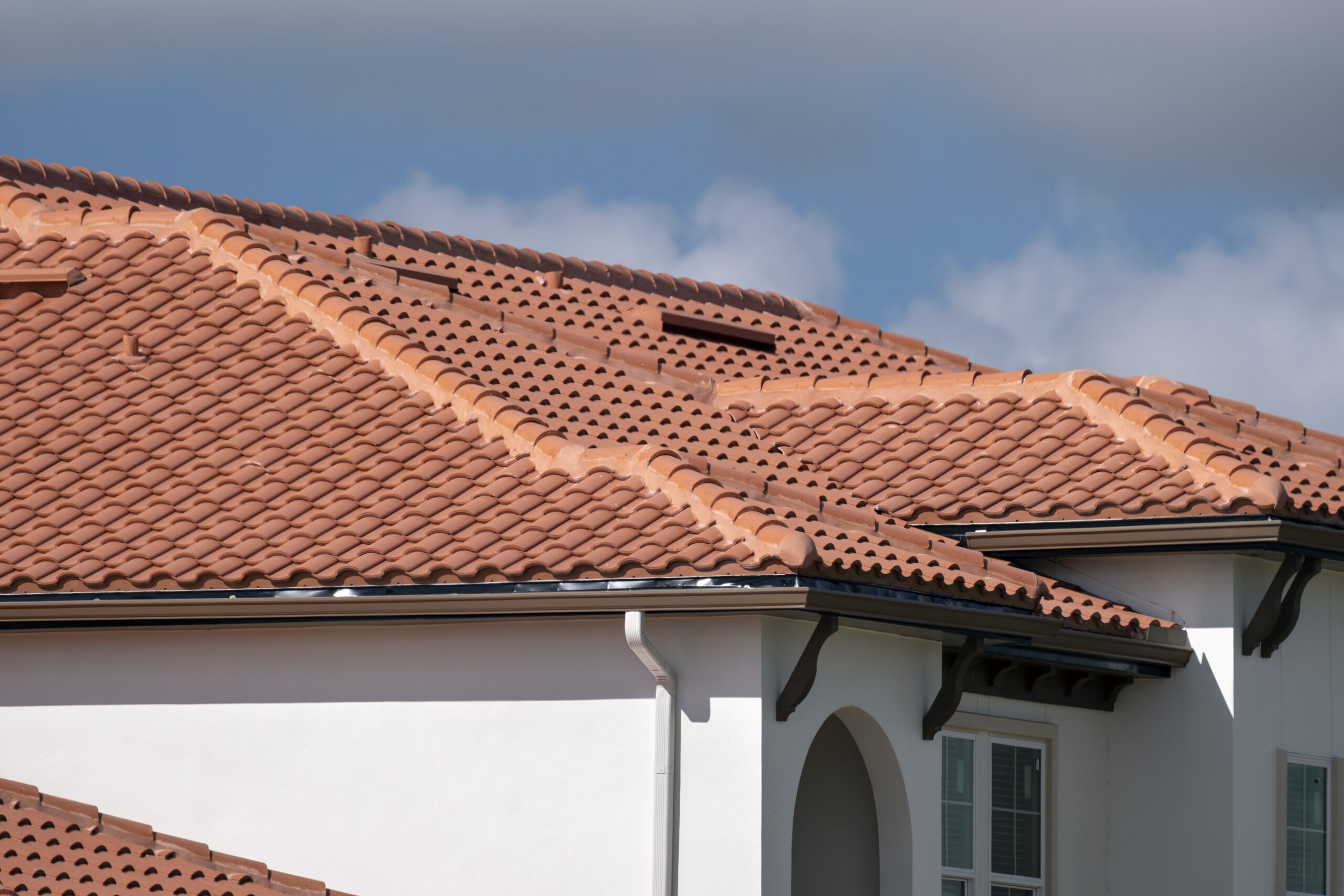Preparing your roof for winter.
Check Your Roofline
Check your roof line for sagging. Your roofline should be straight, so any signs of drooping or curving may mean you need to investigate. A saggy roof can cause frame issues, so catching it early is key.
Check Chimney Flashing For Leaks
Chimney flashing is the strip of metal that seals the chimney and your roof and is one of the most common spots for a roof leak. A Leak in the flashing can be mistaken for a leaky roof.
Check to ensure your flashing doesn’t appear damaged or loose and that the caulk hasn’t cracked or deteriorated. Also, look for any signs of water intrusion near the chimney.

Check The Attic For Signs Of Water Damage
In many cases, the first sign of a leaky roof will be seen in the attic. Symptoms of a leak include water spots on the walls and/or puddles of water on the attic floor. If you see any signs of water damage in your roofing system, you can schedule an appointment to have your roof inspected before winter hits.
Remove debris and clean out your gutters
Remove leaves, twigs, and other debris accumulated on your roof and in your gutters. In the winter, leaves, especially in your gutters, become waterlogged and can cause a block leading to water build-up. Water build-up can cause pooling and a leak over time.
If you are more comfortable letting the pros handle a roof inspection give us a call. (602) 743-3175
Ice Dam’s on a Roof & How to Avoid Them
You might be wondering what an Ice Dam on a Roof is especially if you’re from the Phoenix, Arizona area. To answer your question, an ice dam is a rim of ice that builds at the ends of the roof. When this occurs, it prevents the water caused by rain and melting snow from draining off the roof. The ice dam creates water buildup and eventually causes damage to areas of the home like the walls, ceilings, and insulation. When water gets into these spots, it is imperative to dry the areas as much as possible to avoid mold & mildew. After drying, call a professional to repair the problem.

No one wants to deal with water damage, mold & mildew, and avoidable repairs. To learn how avoid ice dams, let’s start with what causes them… Ice dams are caused by uneven roof surface climate. The outside temperature, outside elements, and heat loss from the home interact and create ice dams. There must be snow on the roof and higher areas of the roof’s surface needs to be above 32 degrees with the lower areas being below 32 degrees. When the snow at the top of the roof melts… the water flows to the lower area of the roof that is below 32 degrees and freezes resulting in an ice dam.
There are a few things you can do in new homes to prevent ice dams.
1.) Verify state code requirements for the ceiling and roof insulation levels are followed by the construction company.
2.) Make sure the contractor has an air barrier through the ceiling to avoid air leakage from the home and into the attic.
3.) Recessed lights, skylights, and heating ducts increase the chance of an ice dam forming.
Not all areas of Arizona are 65 degrees in the winter during the day. If you live up North towards Flagstaff, Payson, or any other location that gets snow, you’re more likely to get roof ice dams verses those of us in the west valley. Prepare your roof before winter hits… it’s coming fast this year!





